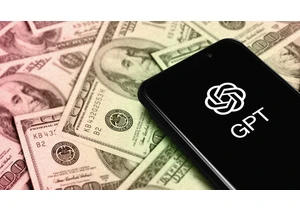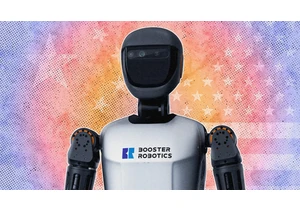When Lyft CEO David Risher took the helm of the rideshare company from cofounders Logan Green and John Zimmer a year ago, his mandate was clear: create a sustainable business by getting the perennial second-place rideshare company to stop bleeding money. The former Microsoft and Amazon executive laid off more than a quarter of the company’s workforce last April and exited ancillary business lines, such as car rentals. That’s helped Lyft lower the prices of its rides, so they’re in line with Uber’s. It’s all part of what Risher calls his key strategy: “customer obsession drives profitable growth.”
The moves are paying off. Lyft trimmed its losses from $1.6 billion in 2022 to $340 million in 2023, and grew ridership 18% year over year. But the biggest news: The company reported that it was cash-flow positive in the fourth quarter of 2023, and says it will continue to be in 2024.
Risher is now facing one of the biggest tests of his growth strategy in a standoff with the Minneapolis City Council, which is pushing to remove rideshare companies’ exemption from the city’s $15.57 minimum hourly wage. The Minnesota Department of Labor found that rideshare and delivery drivers currently make a median wage of $13.63 after expenses. Lyft says that the number is closer to $20 for drivers who don’t buy a car specifically for the job. The company argues that raising wages to the city council’s proposed $1.40 a mile or 51 cents a minute would force it to raise ride prices and make its business unsustainable. Lyft is now threatening to leave Minneapolis (along with rival, Uber) unless the city accepts a compromise: 89 cents per mile (roughly 49 cents per minute). What happens next could set a precedent for the way drivers are compensated in other states.
Risher talked with Fast Company about the company’s future in Minneapolis, whether self-driving cars will transform the industry, and what he learned heading up U.S. retail at Amazon under Jeff Bezos. This interview has been edited for length and clarity.
Lyft has been engaged in a fight with the Minneapolis City Council, which is pushing to remove the company’s exemption from the city’s $15.57 minimum wage. Your company has said it will leave the city if the pay raise gets implemented on July 1st. Why is that?
It’s not that we want to be jerks about this. It’s not that we want to fold up our table and go home. We just don’t want to create a system that is bad for riders because it’s too expensive—and bad for drivers because they’re going to make at least 20% less [because of declining ridership]. We’ve offered a compromise, [and the council members are] in the process of looking it over. I hope they’ll say “yes.” They’ve moved the date to July 1st. Our goal is to stay, but we’re also not going to create a service that’s terrible for riders and drivers. It’s just not how a customer-obsessed organization works.
You mentioned that if driver fees are raised, rides might cost $10 or $20 more. How would raising the minimum wage lead to rides that cost $10 more?
When you start to raise fares, which you would have to do in order to raise the pay for drivers even more, fewer people will take your service. The calculation that we’ve done suggests that fares will go up at least 20%, maybe more. And if fares go up from $20 to $24 or $30 to $36, fewer people take Lyft. Then the fares will have to go up even more.
A study from the Minnesota Department of Labor found that drivers in the state were three times more likely than Minnesota workers overall to require assistance like food stamps or Medicaid insurance coverage. Doesn’t that suggest they aren’t making enough money?
I don’t know that particular part that you’re quoting [from], but I can absolutely tell you the compromise paying drivers 89 cents per mile and roughly 49 cents per minute that’s in front of them right now—which does increase driver earnings—seems super good for us. And then on the point of benefits, we are absolutely happy to offer more benefits.
The Minneapolis City Council pushed back the date for all of this to come into effect to July 1st. What needs to happen for Lyft to stay?
They have to say ‘yes’ to the compromise based off of the report they actually coauthored. If they don’t, we’re going to leave. We’re going to leave in as low impact a way as we possibly can. This is a Minneapolis ordinance; St. Paul is not going down the same path, so we’ll still operate [there]. We’ll still operate at the airport. It will be complicated because we literally are not even supposed to drive through the city of Minneapolis, so to get from the airport to St. Paul means we’re gonna have to go around it. The precedent we hope we set here is one where we say, You know what guys? This is a really important part of your city’s social infrastructure. We are happy to come to a compromise, but please don’t do things that, despite your best intentions, end up driving us out of town.
You’ve threatened to leave cities before. In 2016, you left Austin when that city council wanted to require fingerprinting for all rideshare drivers. Ultimately, the state legislature overruled them and you came back. What can you say about your lobbying strategy around issues like this?
Our lobbying strategy is to help policymakers understand that the gig economy is here to stay. Our drivers are doing this between jobs, or after they lost their job, because they need a fast way to get money within 48 hours of signing up. They’re doing it to supplement their income, or because they’re retired and going crazy at home. A big part of our job is saying that the level of flexibility and control really works. There are trade-offs, and it’s not guaranteed in the way that a full-time job is. It’s a [job] that sort of buffers [the impact of] boom-bust cycles, because it allows people to enter and exit the economy.
In your latest earnings call, you said that Lyft generated positive free cash flow for the first time in Q4. What did it take to get here?
I joined almost exactly a year ago now. And my mantra from the beginning has been that customer obsession drives profitable growth. I learned that at Amazon, under Jeff [Bezos]. In order to make that come true, we had to cut some costs. Because if you want to make sure you’re pricing at the right level—if you want to make sure drivers are getting paid at the right level—you’ve got to make sure you can afford it. So we cut about $300 million [in expenses?].
Are you referring to the fact that in April 2023 you laid off roughly 1,000 employees, a quarter of your workforce?
You can’t be a great company if you can’t afford to focus on your customers. Day one, [I said] we’re really going to focus primarily on our rideshare business. Let’s stop doing a whole bunch of different things. We looked at the [business lines we had] that didn’t really kind of achieve that objective, and that’s what we ended up cutting.
For a long time, rideshare companies claimed that self-driving cars would be dominating the roads by now. Lyft sold off its self-driving unit in April 2021. How do you now think about the future of that technology?
Drivers are going to be an important part of our platform for the foreseeable future . . . let’s just say forever. There’s no world where every single person wants to have a car without a driver in it. So there are all kinds of things that are going to make the [adoption progress] slow. We’ve decided not to do the direct investment ourselves. Other companies like Cruise, Waymo, and Zoox have focused on creating a great self-driving car experience. We are a distribution channel for those cars.
How do your drivers feel about self-driving cars?
You might think they hate them. I’ve actually had drivers myself who’ve said, You know what? By the time these come onto the scene, I’m going to be doing something else. Just because you’re not driving doesn’t mean you can’t be the car-tender shaking the drinks and helping people get to a party. You can be part of the experience anyway.
How much money could you save using self-driving cars compared to cars with drivers?
Your first impression might be we’re going to save a lot. But the cost of insurance is very significant: Insurance companies are actually quite worried about self-driving cars because they don’t have the data to know how to insure and what happens if there’s an accident. There are questions like, Who is responsible? It’s not the driver, so is it the car manufacturer? What if it’s a component of the car that failed that the manufacturer bought from someone else? Maybe there’s a software part to the component. There are all these regulatory and policy issues that are going to add expense and complexity to the whole environment.
I don’t look at [self-driving] as a cost-saving thing. There are going to be new [self-driving] cars that enter our system alongside drivers. That will allow us to pick up people faster and give them new experiences. Then, we’ll see where it goes.
In the year that you’ve been CEO, we’ve seen a huge rise in companies claiming to use generative AI. How is it transforming your business?
A lot of our drivers are first-generation Americans. Many are recent immigrants and their English is not great. This causes them a fair amount of shame and frustration when they want to communicate with riders. We’re developing real-time communication between rider and driver that will allow people to bridge the language barrier by the end of the year.
How do you persuade drivers to join Lyft?
One of the areas where drivers get frustrated is when they tell us, I picked up a rider and they told me they paid 30 bucks and I only got $10 out of it. What’s going on there? Our model is not to pay small; it’s to pay as much as we possibly can. We put in place a 70% earnings guarantee a couple of months ago—we’re expanding it nationwide over the coming weeks. [It says] that every week, if a driver makes less than 70% of what riders pay, after [the driver pays] fees like insurance, we will top them up. Most drivers make about 87 cents on the dollar, but sometimes it’s less.
I am service agnostic. I check all of the rideshare apps to see where I can get a better deal. How do you convince people like me to stick with Lyft?
We want Lyft to be no more expensive—maybe less expensive—and pick you up faster or as fast as the other guys. That’s our goal. Now we’re down to parity [on that front], so we have permission from our riders and drivers to differentiate. We launched a product six months ago called Woman + Connect. It allows women riders to ask for women drivers and vice versa. That’s an example of something where—if that’s important to you for reasons of comfort, or safety, or just mood—we’re the only game in town and you’re not going to switch back.
Login to add comment
Other posts in this group

The role of the CFO is evolving—and fast. In today’s volatile business environment, finance leaders are navigating everything from unpredictable tariffs to tightening regulations and rising geopol

In June, Google released its newest smartphone operating system, Android 16. The same month, Apple previewed its next smartphone oper


I’ve worked at the bleeding edge of robotics innovation in the United States for almost my entire professional life. Never before have I seen another country advance so quickly.
In


Restaurant industry leaders are excited for

Elon Musk’s anger over the One Big Beautiful Bill Act was evident this week a
